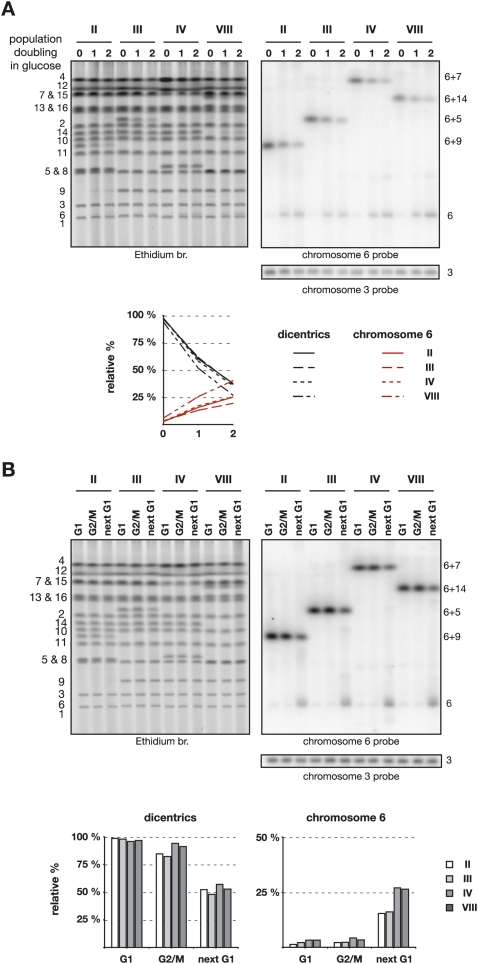Figure 5.
Breakage of dicentrics in RAP1-complemented cells. (A) Clones II, III, IV, and VIII transformed with pRS306-RAP1 were grown exponentially in galactose-containing synthetic medium (0) and switched to glucose-containing rich medium for one or two population doublings (1 and 2). Chromosomes were separated by PFGE, labeled with ethidium bromide (left panel), and probed with a fragment from chromosome 6 (top right panel) and a fragment from chromosome 3 (bottom right panel). The positions of the native and fused chromosomes are labeled on the right. The signals were corrected to the signal from chromosome 3 for each lane. For each series, the indicated percentage is relative to the sum of the dicentric and the unfused chromosome 6 in cells grown in galactose. (B) Cells transformed with pRS306-RAP1 and grown exponentially in galactose-containing synthetic medium were synchronized in G1 with α-factor (G1), released in glucose-containing rich medium, and either blocked in G2/M with nocodazole (G2/M) or allowed to proceed through mitosis to be blocked in the next G1 with α-factor (next G1). Chromosomes were separated by PFGE, labeled with ethidium bromide (left panel), and probed with a fragment from chromosome 6 (top right panel) and a fragment from chromosome 3 (bottom right panel). The positions of the native and fused chromosomes are labeled on the right. The signals were corrected to the signal from chromosome 3 for each lane. For each series, the indicated percentage is relative to the sum of the dicentric and the unfused chromosome 6 in cells in G1 in galactose.

